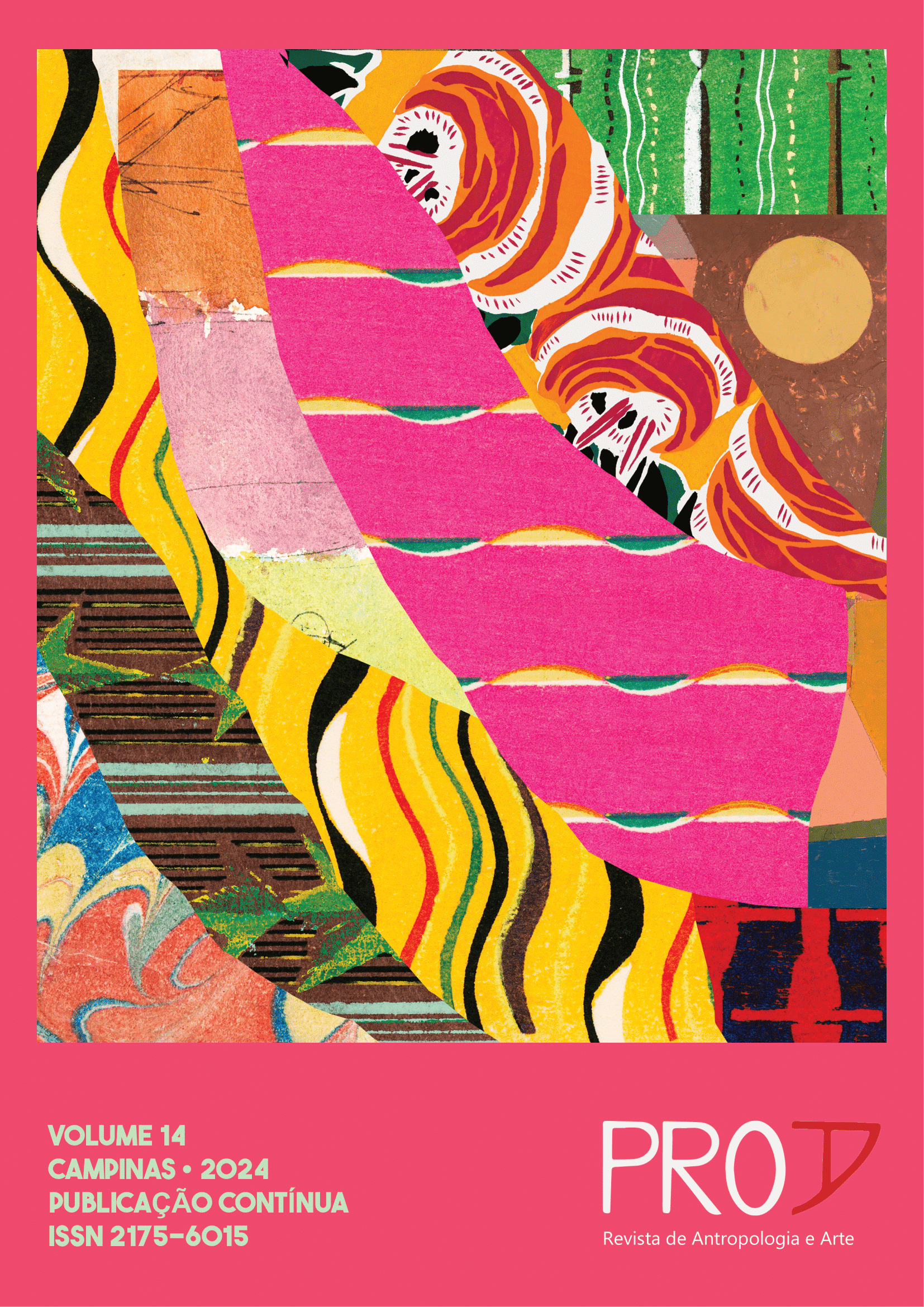Resumo
Em 2005, a cerimônia do kankurang e os ritos de iniciação mandingas foram proclamados Obras-Primas do Patrimônio Oral e Imaterial pela Unesco. Trata-se aqui de analisar o modo como a patrimonialização da cerimônia conduziu progressivamente à sua mercantilização. Este artigo, que recusa a ideia de uma cultura “original”, é parte de reflexões atuais sobre a mercantilização do patrimônio, segundo as quais cultura e mercadoria não se opõem, mas são, pelo contrário, mutuamente constitutivos. Segundo esse ponto de vista, considera-se que a objetificação do patrimônio, longe de frear a mudança cultural, dela participa plenamente. Com foco na maneira como a cerimônia é objetificada pela perspectiva dos espectadores, o artigo mostra que os participantes da cerimônia têm adotado um outro regime visual a fim de obter o reconhecimento da sua arte. Este estudo de caso tem como objetivo desafiar leituras excessivamente pessimistas da mercantilização, as quais pressupõem que qualquer transformação cultural só pode levar à perda.
Referências
APTER, Andrew. The Pan-African Nation: oil and the spectacle of culture in Nigeria. Londres: Chicago University Press, 2005.
BARBER, Karin. Preliminary notes on audiences in Africa. Africa, v.3, n.67, p. 347-362, 1997.
BAUDRILLARD, Jean. Simulacres et Simulations. Paris: Galilée, 1981.
BENJAMIN, Walter. L’Œuvre d’art à l’heure de sa reproductibilité technique. Paris: Allia, 2003.
BOYM, Svetlana. The future of nostalgia. New York: Basic Books, 2001.
CLIFFORD, James. Malaise dans la culture. L’ethnographie, la littérature et l’art au XXe siècle. Paris: École Nationale Supérieure des Beaux-arts, 1996.
COMAROFF, John L.; COMAROFF, Jean. Ethinicity, Inc. Chicago/Londres: University of Chicago Press, 2009.
COOMBES, Annie E. Reinventing Africa: Museums, Material Culture and Popular Imagination. New Haven e Londres: Harvard University Press, 1994.
DE JONG, Ferdinand. Trajectories of a mask performance: The case of the Senegalese Kumpo. Cahiers d’études africaines, n.153, p. 49-71, 1999.
DE JONG, Ferdinand. Masquerades of Modernity: power and secrecy in Casamance, Senegal. Edimburgh: Edinburgh University Press for the International African Institute, 2007.
DE JONG, Ferdinand; ROWLANDS, Michael (ed.). Reclaiming Heritage: alternative imaginaries of memory in West Africa. Walnut Creek: Left Coast Press, 2007.
DOUTREMÉPUICH, Émile. Visite à un “camp” de circoncis en Casamance. Les Missions catholiques, n.72, p. 474-477 ; 386-492.
EBRON, Paulla. Performing Africa. Princeton: Princeton University Press, 2002.
ETHNOLOGIA EUROPAEA. Culture and Property, v.2, n.39, 2009.
KIRSHENBLATT-GIMBLETT, Barbara. World heritage and cultural economies. In: KARP, Ivan et al. (org.). Museum Frictions: public cultures/global transformations. Durham: Duke University Press, 2006.
MARK, Peter. Art, ritual, and folklore: dance and cultural identity among the peoples of the Casamance. Cahiers d’études africaines, v.136, n.34, p. 563-584.
MURPHY, David. Culture, empire and the postcolony : from la Françafrique to le Festival Mondial des Arts Nègres (1996 e 2010). Francosphères, v.1, n.1, p. 19-33, 2012.
MYERS, Fred R. Ontologies of the image and economies of exchange. American Ethnologist, v. 31, p. 5-20, 2004.
PROBST, Peter. Osogbo and the Art of Heritage: monuments, deities, and money. Bloomington: University of Indiana Press, 2011.
ROWLANDS, Michael. Entangled memories and parallel heritages in Mali. In: DE JONG, Ferdinand e ROWLANDS, Michael. Reclaiming Heritage: alternative imaginaries of memory in West Africa. Walnut Creek: Left Coast Press, 2007.
SMITH, Laurajane; AKAGAWA, Natsuko (ed.). Intangible Heritage. Londres/New York: Routledge, 2009.
SPYER, Patricia. The Cassowary will (not) be photographed: The “primitive”, the “Japanese”, and the elusive “Sacred” (Aru, Southeast Moluccas). In: HENT DE VRIES; WEBER, Samuel (ed.). Religion and Media. Palo Alto: Standford University Press, 2001.
STOCZKOWSKI, Wiktor. Unesco’s doctrine of human diversity: A secular soteriology?. Anthropology Today, v. 3, n.25, p. 7-11, 2009.
TAUSSIG, Michael. Mimesis and Alterity: a particular history of the senses. Londres: Routledge, 1993.
UNESCOPRESS. The Samba of Roda and the Ramilia proclaimed masterpieces of the Oral and Intangible Heritage of Humanity. Comunicado de imprensa n. 2005-144. Paris: Unesco, 2005.
WEIL, Peter; SAHO, Bala. Masking for money: the commodification of Kankurang and Simba mask performances in urban Gambia. In: WOOTEN, Stephan (ed.). Wari Matters: Ethnographic Explorations of Money in the Mande World. Münster: Lit Verlag, 2005.

Este trabalho está licenciado sob uma licença Creative Commons Attribution 4.0 International License.
Copyright (c) 2024 Ferdinand de Jong; Sara Morais

